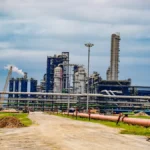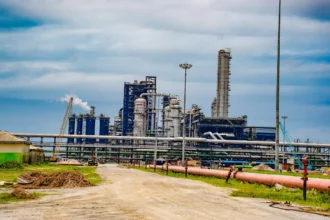Africa’s tire market is booming, fueled by rapid urbanization, demographic growth, and the rise of a middle class driving vehicle ownership across the continent. Yet, this surge in demand highlights a striking paradox: while several African countries produce significant quantities of natural rubber the key raw material for tire manufacturing the continent continues to rely largely on imports from Asia, Europe, and the Americas. Periodic shortages, such as those recently observed in Algeria, have exposed the fragility of this supply chain. Vehicle immobilizations, delayed deliveries, and rising costs have rippled through logistics networks, affecting transport and trade. Meanwhile, import bills keep climbing, underscoring the need for a more resilient and localized tire industry.
A market on the rise
According to Mordor Intelligence, the African tire market is valued at USD 7.10 billion in 2025 and projected to reach USD 8.94 billion by 2030, reflecting a compound annual growth rate (CAGR) of 4.72%. Algeria alone accounts for 26.75% of the market, while the Democratic Republic of Congo is expected to register the highest growth rate at 6.21% through 2030.
This momentum mirrors the continent’s expanding vehicle fleet. Data from Africon, a German consulting firm, indicates that Africa’s 55 million vehicles could grow by 214%, reaching 118 million units between 2025 and 2050. The market spans two-wheelers, three-wheelers, passenger cars, light commercial vehicles (LCVs), medium and heavy commercial vehicles (M&HCVs), and off-the-road (OTR) vehicles with motorcycles being the least affected by tire shortages. A study presented by African researchers Landry Signé and Chukwuka Muniyati at the World Economic Forum highlights Africa’s annual demand of 2.4 million passenger cars and 300,000 commercial vehicles, with South Africa, Egypt, Morocco, and Nigeria leading the market.
Adding to this demand is the long lifespan of vehicles in Africa, where cars often remain on the road well beyond their amortization period. The World Bank, in its report “Safe and Clean Vehicles for Healthier and More Productive Societies,” notes that many imported used vehicles exceed 20 years of age, resulting in frequent maintenance cycles and multiple tire replacements. Poor road conditions further accelerate tire wear, creating sustained demand for all-season and heavy-duty tires across the continent.
Diverse players, limited local production
African tire markets are highly competitive, with Chinese manufacturers rapidly expanding their presence. Brands such as Zhongce Rubber, Triangle Tyre, Sailun, and Linglong have gained significant market share through both distribution networks and local manufacturing investments that reduce import costs. Meanwhile, established global players like Michelin, Bridgestone, and Continental maintain strong positions among urban and premium consumers, banking on brand reputation, durability, and innovation. American, Indian, and Russian brands are also entering the market though African manufacturers remain rare. Most local production comes from foreign joint ventures or relocated facilities in key automotive hubs such as Morocco, South Africa, and Algeria. Notably, Burkina Faso stands out as the only West African country hosting a tire factory for four-wheel vehicles.
Recent developments underscore China’s growing industrial footprint in Africa. In August 2025, Sailun announced a USD 1 billion investment to build a factory in Egypt with an annual capacity of 10 million tires. Earlier in the year, Algerian firm El Hadj Arabi Industries partnered with Doublestar to construct a plant capable of producing 7 million tires per year, expandable to 22 million. In Kenya, after the closure of Sameer Africa in 2024, Shandong Linglong Tire Co. Ltd. signed an agreement to relaunch local tire production.
Natural rubber: Africa’s hidden advantage
Africa possesses one critical resource to shift the balance natural rubber. Key producers include Ivory Coast, Nigeria, Cameroon, Gabon, the Democratic Republic of Congo, and Ghana. West Africa alone accounts for roughly 15% of global production, providing a strong foundation for regional industrialization. Analysts suggest that developing a local value chain could unfold at two levels: Establishing tire manufacturing plants to convert locally sourced natural rubber into finished products, thereby reducing import dependency and external trade deficits.
Developing small-scale tire retreading and reconditioning facilities to serve the thriving second-hand market, extending tire lifespans and promoting circular economy models. Such initiatives would foster industrial diversification, job creation, technology transfer, and innovation, contributing to Africa’s long-term manufacturing self-reliance. However, significant challenges remain. The production of synthetic rubber, a vital component in modern tire formulations, is virtually nonexistent on the continent, keeping Africa dependent on imports for this input.
Moreover, local tire manufacturing requires massive investment in advanced industrial infrastructure that meets global safety and performance standards. Access to complementary materials such as steel wire, textile reinforcements, and chemical additives is still limited, adding to production costs. Skills development also poses a barrier: Africa needs trained engineers, technicians, and materials specialists, as well as robust regulatory and quality frameworks to ensure competitiveness.
In the long run, the continent’s ability to establish a fully integrated tire value chain from rubber plantations to finished products will determine whether Africa can truly bridge the gap between natural resource wealth and industrial autonomy.
From raw potential to industrial power
Africa’s tire paradox encapsulates a broader developmental challenge: transforming abundant raw materials into value-added products. The combination of rising demand, strong resource endowment, and growing foreign investment presents a rare opportunity for the continent to localize production and capture more value from its own markets.















